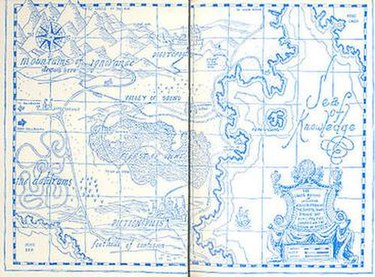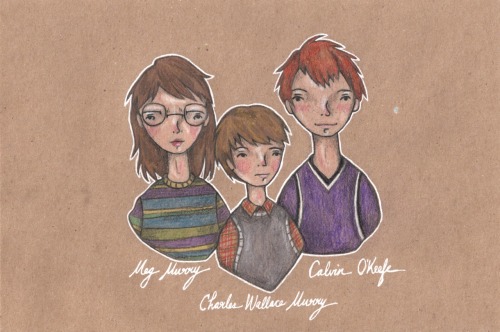MODULE 8:
THE PHANTOM TOLLBOOTH:
THE PHANTOM TOLLBOOTH:
by Norton Juster
Juster, N. The Phantom Tollbooth (1961). New York, Alfred A. Knopf
I had heard of The Phantom Tollbooth, but kept getting it confused with the silent film The Phantom Coachman (which is a classic horror film). Tollbooth, Coachman...it isn't too much of a stretch. The Phantom Tollbooth I think is one of the greatest books I've read, a sly, witty masterwork where words (and numbers) are used in a clever and fantastic way.
Milo is a young boy who "regarded the process of seeking knowledge as the greatest waste of time of all". As such, education is not worth the effort. The very next day, a box arrives and with a little assembly, Milo has a phantom tollbooth. He takes his small electric car, pays the toll, and decides to use the map included to go to a place called Dictionopolis.
Once he goes, he finds himself in the most fantastical world imaginable: the Kingdom of Wisdom, which is surrounded by the Sea of Knowledge. Dictionopolis is a city ruled by King Azaz the Unabridged, where words are the commodity. On his way to Dictionopolis, Milo meets Tock, a watchdog in the purest sense: literally a dog who has a large watch as part of his body. In Dictionopolis, he sees the word market, where letters and words are bought and sold for all occasions. He also meets such creatures as The Spelling Bee (a large bee that spells and gets occasional work in bonnets) and the Humbug, a most loquacious creature prone to saying the wrong thing at the wrong time.
King Azaz holds a feast where the guests eat their words, and informs Milo and Tock that things have been off since the banishment of Sweet Rhyme and Pure Reason, the sisters of both King Azaz and his brother, the Mathemagician. The brothers, angry at Rhyme and Reason's ruling that words and numbers were of equal worth, banished them to the Castle in the Sky. Since then, the world of Wisdom has been out of whack. King Azaz appoints Milo, Tock (who ironically goes 'tick'), and the Humbug to rescue the Princesses, but they must get the agreement of the Mathemagician, and the two brothers never agree on anything.
It looks like an impossible task, but Milo agrees, beginning a great journey that takes them to such places as the Island of Conclusions (which you can get to only by jumping), the Point of View (where a man can be the tallest midget, the smallest giant, the thinnest fat man, and the fattest thin man---and be the exact same person), the twin cities of Reality and Illusion (not particularly nice places to live in) before reaching the rival city of Digitopolis. The Mathemagician won't agree to Azaz's idea, but Milo points out that they've both agreed to disagree on the matter of the Princesses, and no matter how the Mathemagician sees it, Milo is correct. Like Azaz, he gives the travelers gifts to protect them as they travel through the Valley of Ignorance, where they must face demons like the Everpresent Wordsnacher Bird (who takes words right out of your mouth), the charming but dangerous Terrible Trivium (demon of petty tasks and worthless jobs), and the Senses Taker (who not only takes your physical senses but your sense of honor and worth and who is brought low because he couldn't take their sense of humor).
They finally arrive at the Castle in the Air, where the Princess Sweet Rhyme and the Princess Pure Reason have been waiting for them. They believe it is time to return, but with the Castle cut off how to get back. Well, time flies...and since Tock is a watchdog...well, there's logic in that. They are chased by other terrible demons, like Gross Exaggeration, the Threadbare Excuse, and the Overbearing-Know-It-All, until the joint forces of Wisdom come at the foot of the Mountains of Ignorance and scare them away. With Rhyme and Reason returned, Azaz and the Mathemagician hold a joint feast and pledge to work together to defeat the Demons of Ignorance. As Milo leaves sadly for his own world, he hears the two rules begin to slowly argue over primacy. Sadly, the next day the Phantom Tollbooth has disappeared, sent off to other boys and girls that will require its services. As for Milo, he now saw the world in a different way: all that he failed to notice suddenly became sharp, and he saw books all around his room, which could take him anywhere, help him create anything, discover new places, new sights, new sounds, and realized he would like to return to the Kingdom of Wisdom, but he has so much to do now where once he had nothing to do.
I had never read The Phantom Tollbooth until now, but I don't think I have enjoyed a book as much as I did this one. This is the first book to make me laugh out loud as I read it since I read a Jeeves and Wooster book by P.G. Wodehouse. The Phantom Tollbooth is a word-lover's delight, full of witty puns all around. If you 'leap to Conclusions', you are likely to meet the figure of Canby (as in "can be"), someone who is 'as brave as can by, and as cowardly as can be'. You might find yourself stuck in The Doldrums, a world where the slow and uninterested Lethargians live. In Dictionopolis, Milo is taken to the banquet by a special vehicle, where everyone must remain silent because it's one that 'goes without saying'.
At this banquet, the King admonishes Milo for being so ordinary. He tells them of his Cabinet's many tales: making mountains out of molehills, splitting hairs, leaving no stone unturned, but the poor Undersecretary hangs by a thread. In Digitopolis, the numbers are mined, and if a number is broken, no worries: they use them for fractions. If you want to walk across a large room quickly, just draw a straight line (since it's the shortest distance between two points).
I also find The Phantom Tollbooth to be extremely quote-worthy, a valuable tome where its wit and wisdom shine through. In Dictionopolis, Milo meets King Azaz's Cabinet: the Duke of Definition, the Minister of Meaning, the Earl of Essence, the Count of Connotation, and the Undersecretary of Understanding. They each serve to provide synonyms to their individual statements. Their job is to make sure all the words sold in the Word Market are proper words. "But we never choose which ones to use, for as long as they mean what they mean to mean we don't care if they make sense or nonsense". Alec Bings, whom they find at the Point of View, informs them that "the way you see things depends a great deal on where you look at them from". Truer words...
After Milo meets the .58 child (since families average 2.58 children) and fails to reach the Point of Infinity, he tells the Mathemagician how he finds much of this world hard to understand. "You'll find that the only thing you can do easily is be wrong, and that's hardly worth the effort".
The Phantom Tollbooth is so remarkably clever and witty, and quite punny if you get what is being said. For me, The Phantom Tollbooth is on the same level as Alice in Wonderland and/or The Wizard of Oz. Both are about children travelling to a strange world where all sorts of impossible things and being are. Both the main characters are rather shocked by everything because it goes against their common sense. However, in both Wonderland and the Kingdom of Wisdom, there is a logic to everything and everyone (even if that logic is a bit bonkers).
We also have some familiar fairy tale elements. The rescue of a princess (or two), travels through dangerous worlds where they must face off against formidable opponents. A triumphant return where the hero wins the day.
BRIEF REVIEW DISCUSSION
I simply loved The Phantom Tollbooth, so much so that I hope to reread it and get my own copy to which to highlight all the wonderful phrases that I think should serve as words of Wisdom for everyone to live by. Michael Chabon, a respect author himself, commented on the wit in The Phantom Tollbooth, that while the lands and characters were allegorical, the book "manages to surmount the insurmountable obstacle that allegory ordinarily presents to pleasure". In other words, one can learn without being overt about it. You can read it on a surface level, or on a deeper level about the importance of learning. This ability to work both as the story you are reading as well as a deeper story is what to my mind makes The Phantom Tollbooth one of the best books I've ever read. I will treasure this book and know that I will be revisiting it in the future. I loved it so much I'm tempted to give it to friends and family as gifts and have recommended it to a friend in South Africa.
PROGRAMMING SUGGESTIONS
A great program would be a Costume Party where you dress as a pun: A Spelling Bee, a Listening or Computer Bug, a Book Mark (great for boys named Mark) or a Cutting Remark. One can create a Tollbooth where children must pay a 'fare' (maybe a set number of books checked out or read) to enter, or the crowning of a Princess of Pure Reason and Sweet Rhyme. Finally, have students travel through the library to find such places and objects as the Valley of Decision and the Wheel of Fortune.
 |
| Norton Juster Born 1929 |
REFERENCES:
Chabon, M. (2011) The Phantom Tollbooth and the Wonder of Words [Review of the book The Phantom Tollbooth by Norton Juster]. Retrieved from http://www.nybooks.com/blogs/nyrblog/2011/apr/21/michael-chabon-phantom-tollbooth-wonder-words/






